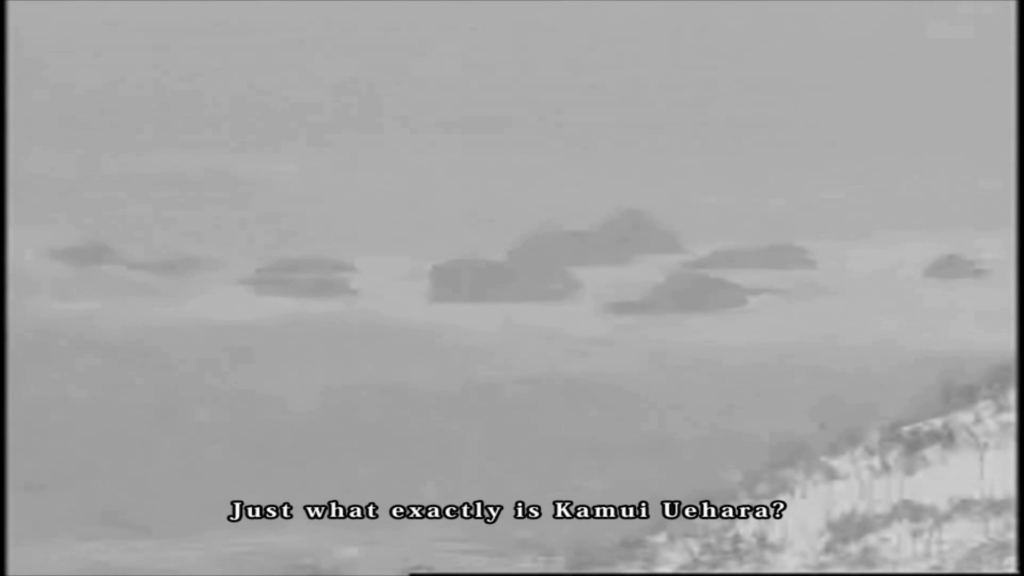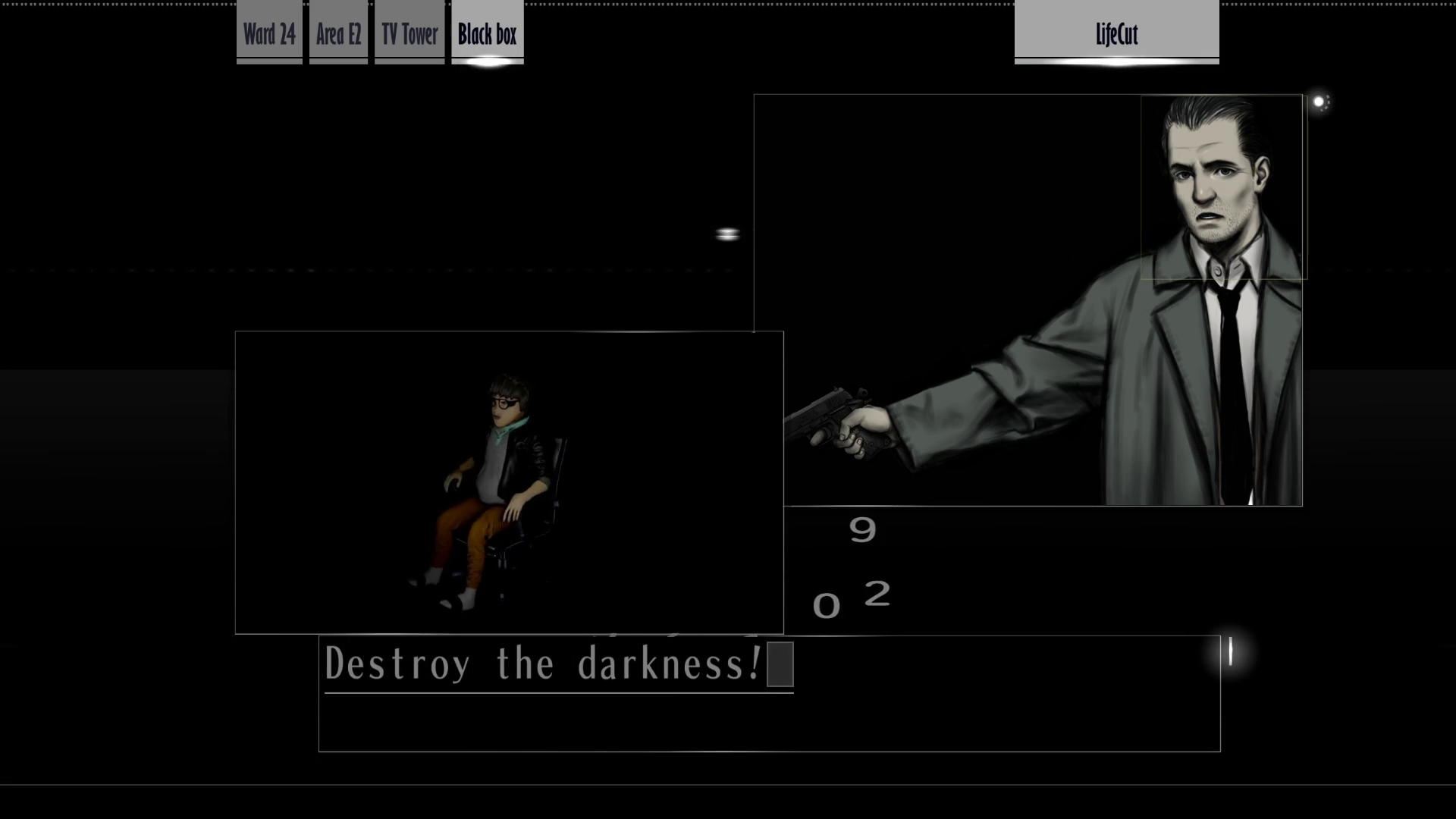Savior and the Shelter Kids’ revenge, the fourth Kamui

The Kamui feature that appears on the news in “LifeCut” concludes with a question, asked over footage of Cape Kamui: “Just what exactly is [Uehara Kamui]? A full-fledged terrorist? Just a run-of-the-mill criminal? Or the personification of the end of the millennium?”
The authorities cannot completely control the “facts” or totally contain the liberatory aspects of the Kamui narrative. By the point that the fourth Kamui is established, the higher orders of “facts” have inverted the meaning of this criminal information: instead of a serial killer like Ryo or Minato, “Some even say [Kamui] represents hope itself.” He is repeatedly identified as a “savior” to the young. Note that Fujiwara emerges from catatonia with the coming of winter, in other words with the approach of 2000, a “new age” after the darkness of the last thousand years. The new millennium will be defined by “the light of possibility” Kusabi describes, a light “that can be grasped by anyone.” This light is the chance to personally change and to change society by killing the past.
Except for the first Kamui, each of the five Kamuis are defined by killing the past and seeking the light of possibility. Even the deceptive third Kamui is sold as someone who kills darkness and, so his fans believe, seeks freedom. Unlike the ghoul Nakategawa describes seeking darkness, what Kamui pursues is emphatically not the darkness of the past and control embodied in Nezu, whom Kusabi identifies as “darkness” itself, and Uminosuke, who only appears literally in darkness, almost as though he is composed of it. In The Silver Case, “Kill the shadow, and give birth to the light,” in Kusabi’s formulation, is the nature of killing the past.

It is clear why the old men who rule the 24 Wards play Kamui up as a demonic monster. Kamui/Ayame is a type of information threatening to their power. The figures in power are the shadows, the darkness, that must be killed — whom Kamui and those aligned with him kill.
Despite Nakategawa’s efforts, the fourth Kamui outlives Fujiwara’s execution. The heroes of the story imitate the assassination of a string of powerful figures. The occult “criminal power” Fujiwara and his related information exposes to Akira and Tokio causes them, as well as Kusabi, to continue killing powerful figures starting on 24 December. In her own separate storyline, Sakura is mobilized to undertake liberatory violence against the state and her father’s values through exposure to successive forms of “criminal information,” in other words the occult “facts” behind the “truth.” First, with guidance from Sumio, another figure steeped in “criminal information” in the Fujiwara-influenced Mikumo Boys conspiracy, she discovers her own past as a victim of the Ayame Maspro. Then she encounters the effects of manufactured crime with Minato. Finally, she encounters the “facts” in the IEDU Building. The cumulative information moves her to action on 24 December as well, when she defies Nakategawa’s orders, kills Chizuru (a tragic third Kamui) at the Mass Production Center, explains how the police serve to support the interests of the oligarchs who abducted her as a child, and accompanies Akira to the Triangle Towers. Akira kills Nezu in the Black Box before fleeing into the forest of light with Kusabi in “LifeCut.” Then Tokio kills Uminosuke before ascending into the titular, literal bright white light of 2000 at the end of “HIKARI.”